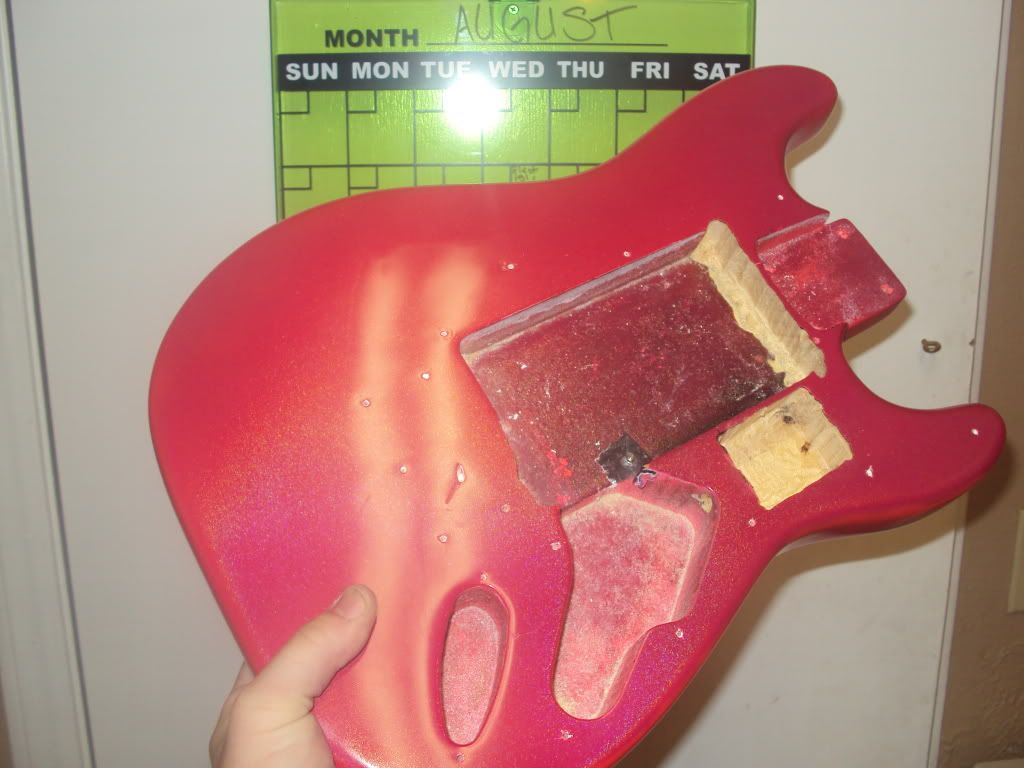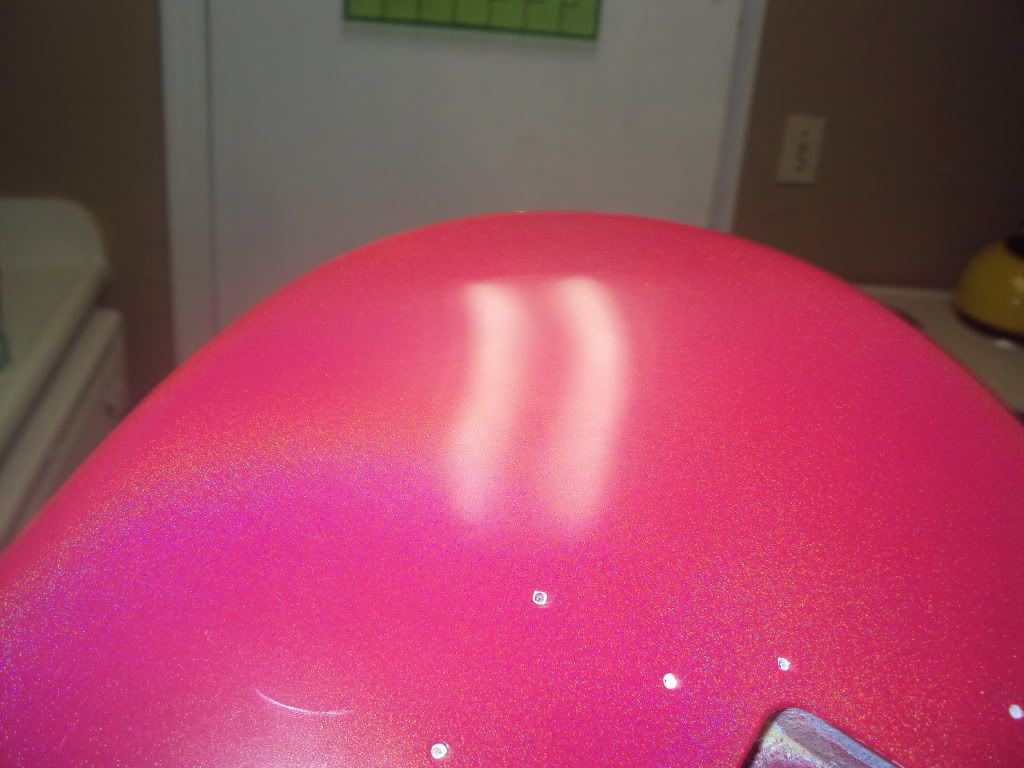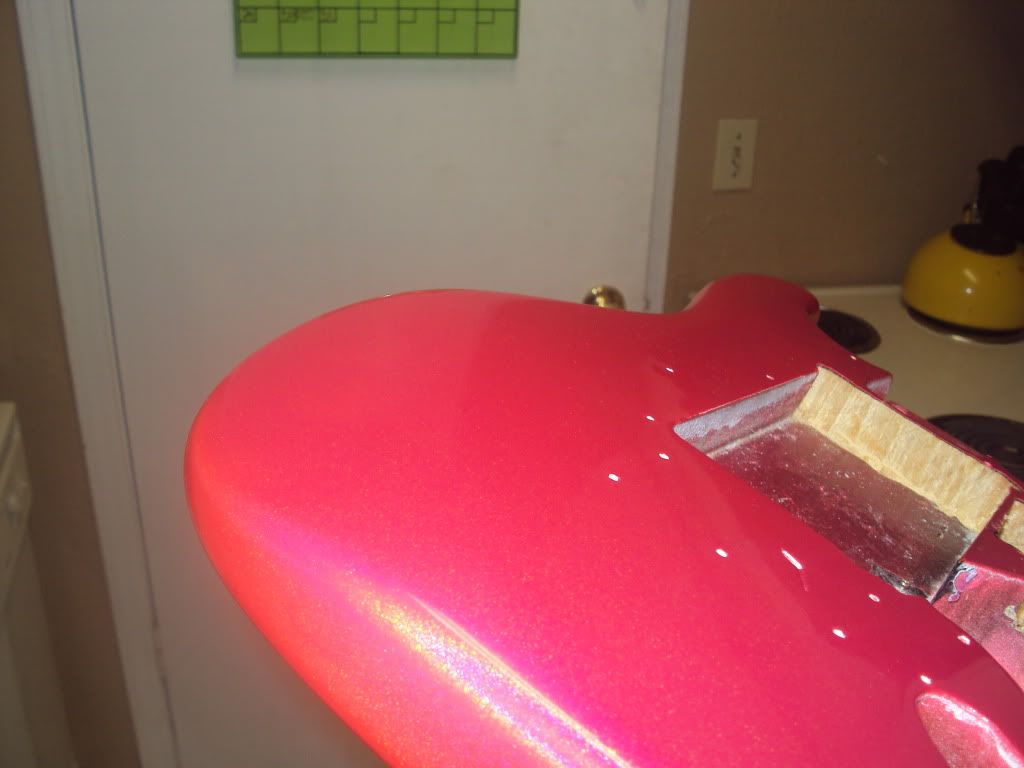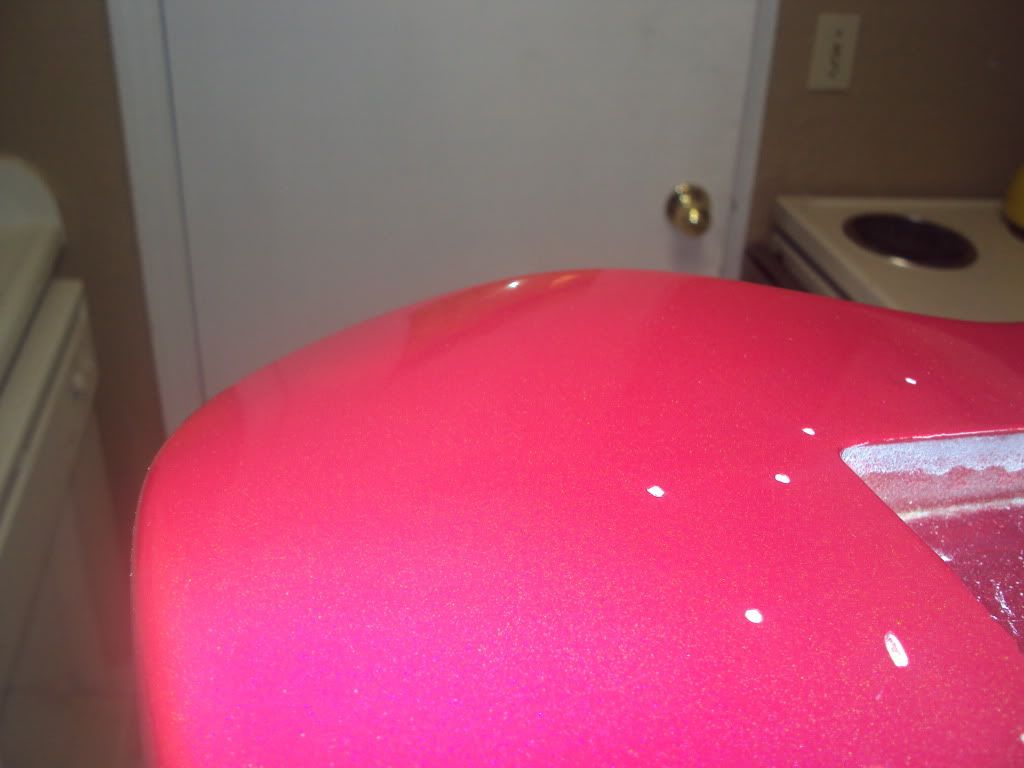Posted: Tue Aug 17, 2010 11:30 pm
Phil,
Is this the 3m Finesse It II you used?
Is this the 3m Finesse It II you used?




Yes sir, that's the stuff!taylornutt wrote:Phil,
Is this the 3m Finesse It II you used?
I've tried that too - I've got tubs of the red rubbing and white (green container tub) polishing compounds here. They seem to work well too, but I think the Finesse It is actually a bit "finer" grit than even the Turtle Wax white compound, and it seems to remove even finer scratches and swirl marks. That's just based on my experience - I have no further facts to back that up though.wantsasupersonic wrote:Now that I see The pic's full size, my camera does no justice. Ive used The Turtle Wax rubbing compound on all my guitars and they're like glass.
taylornutt wrote:Phil O'Keefe wrote:
Is it safe to leave the body outside in the heat? Would that speed up the hardening process?
If it's not humid outside, it may speed things up a bit. When I went on the tour over at Fender, they had a few paint drying rooms where the temps were at least 20-30 degrees (F) hotter than the rest of the factory. Nitro isn't a chemical drying process; it hardens as the solvents (acetone, etc.) evaporate. Low humidity and warm conditions appear to help, but even with that, it just takes time. Another thing I've heard that helps a bit is "cracking" the surface by lightly sanding it with 800 grit every week or so during the drying process... apparently it breaks up the surface just enough to remove some of the outer "shell" so the paint underneath can dry / and the solvents can evaporate easier. Does it work? I tried it once, and it seems to help, but again... not a lot. It still takes a good two to four weeks for nitro to firm up to the point where I'd want to even consider reassembly, and it will still be somewhat "soft" for a good month or three after that....
I used a block with the #600 and #1000 paper. the Micro mesh is a rectangular pad so you really don't need a block.Phil O'Keefe wrote:Yes sir, that's the stuff!taylornutt wrote:Phil,
Is this the 3m Finesse It II you used?
Oh, and I'll second the notion of using a block to wrap the sanding paper around. I'm not sure if you need or can use one with the micromesh, but they're important to use when wetsanding with conventional paper.
Phil O'Keefe wrote:I am not in a hurry. Being broke will do that. My plan is to order the finesse it polish and shield the body after polishing with a combination of shielding paint and copper tape. I will wait at least a month from the last clear coat spray before attempting assembly. I have worked too hard to rush it along and screw it up. I can't have the guitar setup until I get paid again anyway. I might see if the tech will install the nut so that part is finished. I also plan to lightly sand and polish my Musicmaster body to remove some stick residue.taylornutt wrote:Phil O'Keefe wrote:
Is it safe to leave the body outside in the heat? Would that speed up the hardening process?
If it's not humid outside, it may speed things up a bit. When I went on the tour over at Fender, they had a few paint drying rooms where the temps were at least 20-30 degrees (F) hotter than the rest of the factory. Nitro isn't a chemical drying process; it hardens as the solvents (acetone, etc.) evaporate. Low humidity and warm conditions appear to help, but even with that, it just takes time. Another thing I've heard that helps a bit is "cracking" the surface by lightly sanding it with 800 grit every week or so during the drying process... apparently it breaks up the surface just enough to remove some of the outer "shell" so the paint underneath can dry / and the solvents can evaporate easier. Does it work? I tried it once, and it seems to help, but again... not a lot. It still takes a good two to four weeks for nitro to firm up to the point where I'd want to even consider reassembly, and it will still be somewhat "soft" for a good month or three after that....
It'll be better to have him do it all at once, more accurate measurements and adjustments can be made when you have it up to the body the neck will mate.taylornutt wrote:I might see if the tech will install the nut so that part is finished.



That pretty much sums it up. I will do a little more buffing, install the string ferrules and start shielding.Phil O'Keefe wrote:I think he was deliberately trying to go lightly so he'd be able to see some grain through the finish.
As far as how much polish, it's up to you. At this stage, Fender would be "buffing" the guitar out with a wheel and polishing compound, so it's actually quite a bit of "rubbing" to get a really high luster / shine on there... and it won't work as well as it should unless all the sanding was done properly - IOW, polishing isn't going to remove any deep scratches or level things out by itself.
If you're happy with the way it looks now, then you're "done".
It got a little heavier towards to the neck area than I might have liked, but most of that will be covered by the pickguard anyway.benecol wrote:I knew you wanted a thin finish, but surely you'll want it even too?
